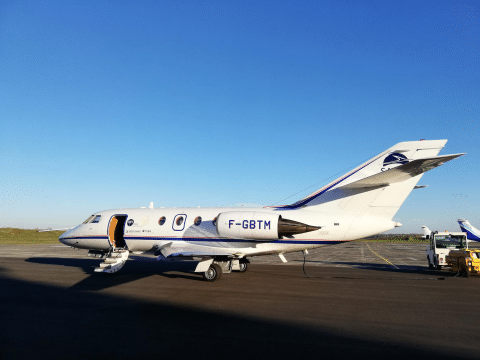# News
Flight Tests Validate Orolia’s GADSS Autonomous Distress Tracking Solution
Guidel, France, January 12, 2021 – Orolia recently organized a series of flight tests to demonstrate and qualify capabilities of the GADSSThe Global Aeronautical Distress and Safety System is an aircraft tracking technology that is responsible for tracking the location and status of the aircraft throughout all phases flight. GADSS main functions are: aircraft tracking, autonomous distress tracking, post flight localization and recovery. global aircraft safety program’s end-to-end Emergency Locator Transmitter Distress Tracking (ELT-DT) system, including Orolia’s Ultima-DT solution.
With these successful flight test results and the exceptional performance of its Ultima-DT system, Orolia is now the world’s first industry supplier to offer a compliant solution to GADSS Autonomous Distress Tracking requirements, as required for new-built commercial aircraft after January 2023.
This major European initiative has been led by Orolia with the support of French and Spanish government partners such as France’s CNESCNES is the French Government Space Agency., the Spanish and French Air Traffic Service Units, the Spanish and French Mission Control Centers, the Spanish and French Rescue Coordination Centers, as well as two major Airline Operation Centers from Air France and Iberia. This was the first opportunity to evaluate a system-level implementation of the new Global Aeronautical Distress Safety System (GADSS), particularly its Autonomous Distress Tracking component (ADT).
This evaluation included Orolia’s Ultima-DT, the latest generation of Emergency Location Transmitter (ELTAn Emergency Location Transmitter is a small device that transmits radio signals to search and rescue teams in case there is a crash or emergency. The signals are used by search and rescue teams to locate the vehicle and rescue the crew.) with Distress Tracking capability. The flight tests were conducted in a business jet, flying along a trajectory across Spain and France. The robustness of the alert and tracking transmission, which involves the Cospas Sarsat MEOSARMedium Altitude Earth Orbit Search and Rescue system, is a system of satellites, ground stations and mission control centers that can identify distress signals sent from emergency beacons and send help to their location. These MEO satellites orbit the Earth at an altitude between 19,000 and 24,000 km above the earth. satellite constellation, as well as the performance of ground reception and distribution, were confirmed- even with extreme aircraft attitudes.
These tests also provided the opportunity to review some organizational and process aspects, in particular the insertion of the Distress Tracking process into the general aircraft alert management process, including communication between Air Traffic Service Units, Rescue Coordination Centers, and Airlines Operations Centers in France and Spain.
Though test data still need to be applied to ongoing program development, preliminary results showed excellent system performance with 100 percent scores for the transmission/detection rate, as well as geo-location functionality. All stakeholders were able to receive distress information in a timely manner.
“This successful evaluation enabled all participants to collect large quantities of critical data in an accurate operational context. The maturity level of the GADSS distress tracking system, including Orolia’s Ultima-DT, has now been verified with the same level of reliable performance both in flight and on the ground,” said Christian Belleux, aviation product line director at Orolia. Ultima-DT was developed through the Helios initiative, with funding support from the European GNSSGlobal navigation satellite system (GNSS): A general term describing any satellite constellation that provides positioning, navigation, and timing (PNT) services on a global or regional basis. See also Agency under the European Union’s Horizon 2020 research and innovation program, grant agreement No 687554.
About the GSA
The European GNSS Agency (GSA), is the European Union Agency in charge of managing operations, security and service provision for Europe’s Global Navigation Satellite Systems (GNSS), Galileo and EGNOS.
By working with stakeholders, industry, service providers and user communities, the GSA ensures the highest return on European GNSS investment, multiplying the benefits of space applications for European citizens and business, boosting innovation and competitiveness, and securing sustainable economic growth. The GSA is also funding projects under the European Commission R&D H2020European Union global Research and Innovation programme covering 2014-2020 period. Horizon Europe is the following programme covering 2021-2027. New RLS capable Search and Rescue Beacons has been developed with H2020 support. programme. The GSA will soon become the European Union Space Programme Agency (EUSPA).
For more information, visit the GSA website.
Press Contact:
Sophie Zangs
+33 (0) 6 07 42 39 33
sophie.zangs@orolia.com


